Introduction: Embracing the Future of Home Design
As we move into 2025, the world of interior design continues to evolve, reflecting our changing lifestyles, values, and aesthetic preferences. This year’s home decor trends showcase a beautiful balance between innovation and timeless appeal, with a strong emphasis on sustainability, personalization, and multi-functional spaces. Whether you’re planning a complete home renovation or simply want to refresh your living space with a few trendy touches, this comprehensive guide to 2025 home decor trends will inspire and inform your design decisions.
From biophilic elements to smart technology integration, we’ve researched the most influential interior design trends that will dominate homes throughout 2025 and beyond.

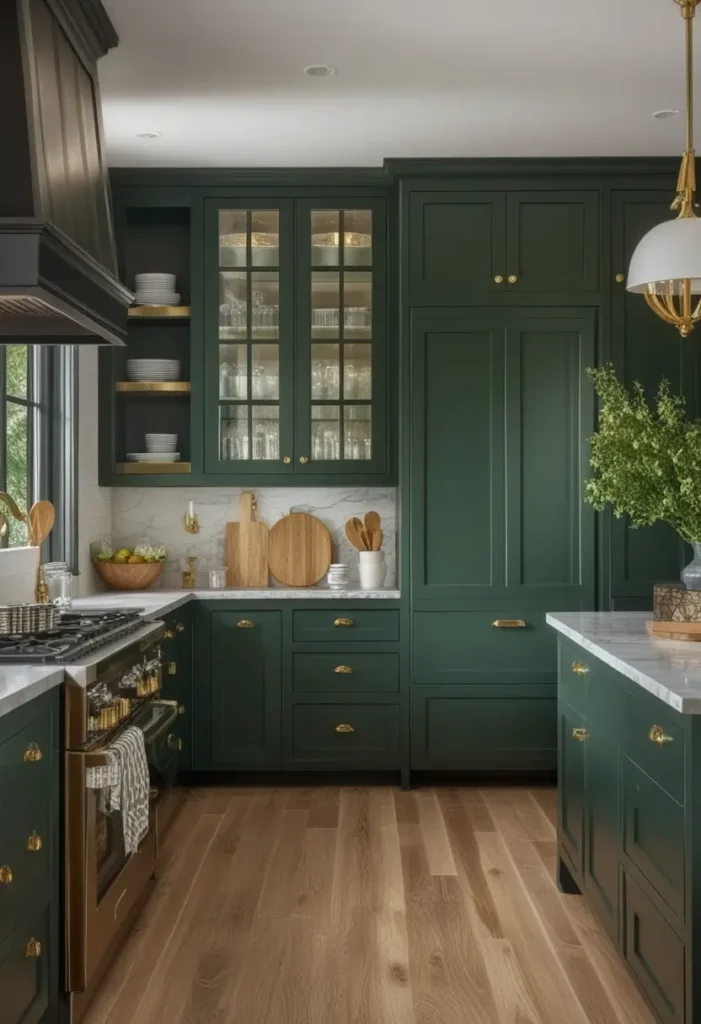
1. Biophilic Design: Bringing the Outdoors In
What is Biophilic Design?
Biophilic design continues to gain momentum in 2025 design trends, evolving beyond simple houseplants to become a holistic approach to interior design. This trend is driven by our innate connection to nature and growing research showing the positive impact natural elements have on our mental health, productivity, and overall well-being. The pandemic years created a lasting appreciation for natural environments, making biophilic design not just aesthetically pleasing but essential for creating healthy living spaces.
Key Elements of Biophilic Design in 2025
- Living walls and vertical gardens: Moving beyond standalone plants to integrated green systems
- Natural materials: Unfinished wood, stone, rattan, bamboo, cork, and clay
- Organic shapes and forms: Curved furniture, irregular patterns, and asymmetrical designs inspired by nature
- Natural light optimization: Larger windows, skylights, and glass doors
- Water features: Indoor fountains, small water walls, and reflective surfaces
- Natural color palettes: Earthy tones, forest greens, ocean blues, and sunset hues
- Nature-inspired patterns: Botanical prints, animal motifs, and geologically inspired textures
How to Implement Biophilic Design Throughout Your Home
Living Room: Create a biophilic focal point with a living wall or statement plant like a mature olive tree or fiddle leaf fig. Incorporate natural wood coffee tables, stone accents, and textiles featuring subtle botanical patterns. Position furniture to maximize natural light and views of outdoor spaces.
Kitchen: Introduce herb gardens on windowsills or countertops. Opt for natural stone countertops, wooden open shelving, and natural fiber rugs. Consider larger windows or glass doors that connect to outdoor dining areas.
Bedroom: Select air-purifying plants like snake plants or peace lilies for better sleep quality. Choose organic bedding materials like linen or cotton in earthy tones. Maximize natural light during the day with sheer curtains while ensuring effective blackout options for sleep.
Bathroom: Create a spa-like atmosphere with moisture-loving plants like ferns and orchids. Install a wooden bath tray, stone sink, or pebble shower floor. Consider skylights or frosted windows that provide privacy while maximizing natural light.
Home Office: Position the desk near a window with a view of nature. Incorporate a variety of plants at different heights to create visual interest. Choose natural materials for desk and storage solutions. Add a small indoor fountain for the soothing sound of water.
Biophilic Design Styles
- Modern Biophilic: Clean lines, minimalist approach to plant integration, emphasis on natural light
- Rustic Biophilic: Heavy emphasis on raw, unfinished woods, stone elements, and traditional botanical motifs
- Tropical Biophilic: Bold, leafy plants, vibrant natural colors, and rattan or bamboo furniture
- Desert Biophilic: Succulent gardens, sandy neutrals, terracotta, and natural rock formations
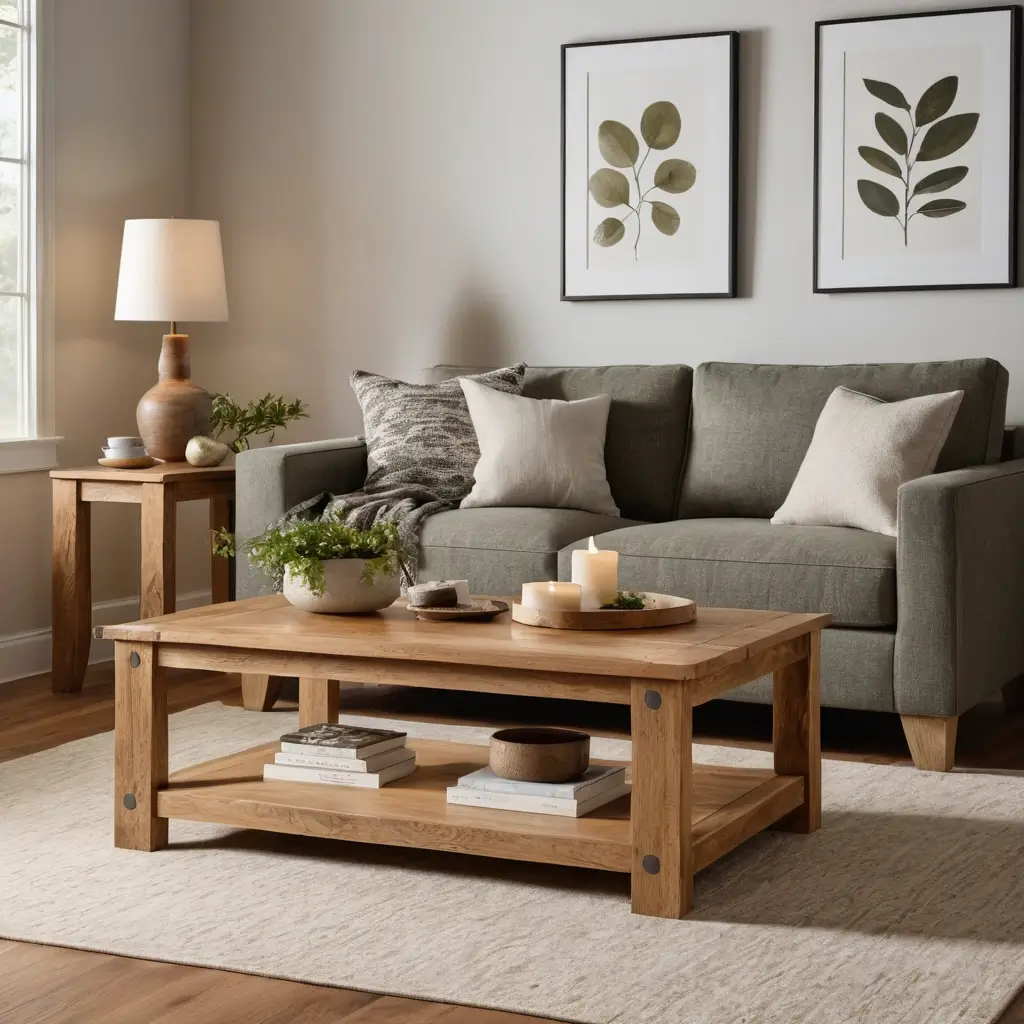
2. Sustainable and Eco-Conscious Interiors
The Rise of Sustainable Home Decor in 2025
Sustainability isn’t just a trend; it’s becoming the standard in 2025 home decor. Consumers are increasingly aware of their environmental impact, demanding transparency from brands and making conscious purchasing decisions. The focus has expanded beyond simply using eco-friendly materials to considering the entire lifecycle of decor items—from production processes to longevity and eventual disposal or recycling.
Key Elements of Sustainable Decor
- Circular design principles: Products designed for disassembly, repair, and recycling
- Upcycled and repurposed items: Giving new life to existing materials
- Low-impact, natural materials: Organic cotton, hemp, linen, sustainably harvested wood, and rapidly renewable resources like bamboo
- Zero-waste production: Minimizing waste throughout the manufacturing process
- Locally sourced materials and craftsmanship: Reducing carbon footprint from transportation
- Non-toxic finishes and treatments: VOC-free paints, natural oils, and water-based sealants
- Energy-efficient elements: LED lighting, thermal insulation, and smart thermostats
- Water-conserving fixtures: Low-flow faucets, dual-flush toilets, and rainwater collection systems
How to Create a Sustainable Home in 2025
Living Areas: Invest in quality, timeless furniture made from sustainable materials with non-toxic finishes. Seek out statement pieces made from recycled materials like plastic-waste terrazzo or reclaimed wood. Use organic cotton or hemp for upholstery and curtains. Choose rugs made from natural fibers or recycled materials.
Kitchen: Opt for energy-efficient appliances, water-saving fixtures, and recycling stations. Select cabinetry from FSC-certified wood or bamboo. Choose countertops made from recycled glass, paper composite, or sustainably quarried stone. Install compost systems for food waste.
Bedroom: Select organic, non-toxic bedding free from synthetic materials and harmful chemicals. Choose mattresses made from natural latex, organic cotton, or wool. Use secondhand or antique furniture where possible. Select zero-VOC paint for walls.
Bathroom: Install water-efficient fixtures. Choose recycled glass tiles or sustainably harvested wood for floors and walls. Use organic cotton towels and bath mats. Select refillable soap dispensers and eco-friendly toiletries.
Sustainable Decor Styles
Bohemian Sustainable: Vintage finds, handcrafted items, natural fibers, and eclectic mix of repurposed elements
Scandinavian Sustainability: Minimalist approach with light woods, neutral palette, and natural textiles
Industrial Eco: Focus on reclaimed materials, exposed sustainable systems, and repurposed industrial elements
Eco-Luxe: Sustainable materials with high-end finishes, proving eco-friendly can also be luxurious
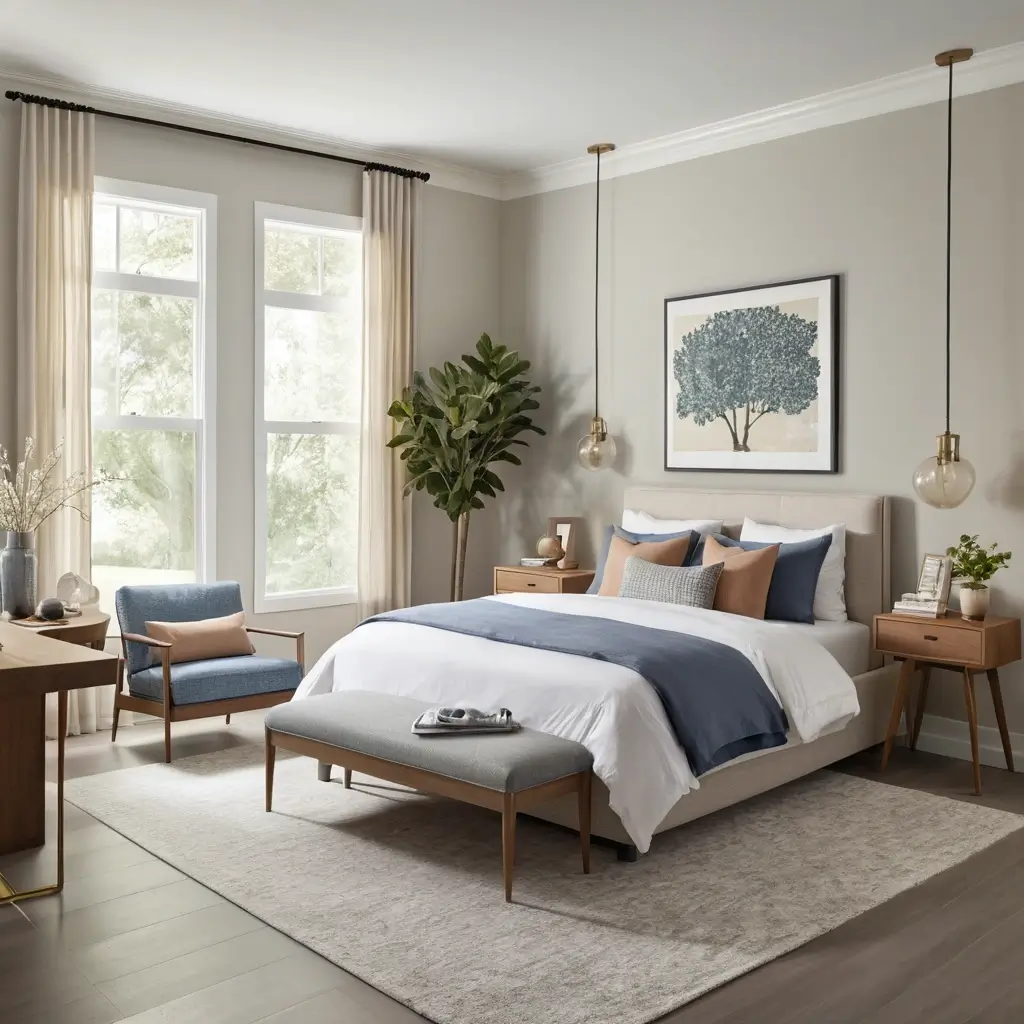
3. Multifunctional and Flexible Spaces
The Evolution of Flexible Living in 2025
The pandemic permanently altered our relationship with our homes, establishing the need for spaces that can serve multiple purposes. In 2025, this trend continues to evolve with increasingly sophisticated and elegant solutions for multifunctional living. The focus has shifted from temporary solutions to intentionally designed flexible spaces that don’t compromise on aesthetics or comfort.
Key Elements of Multifunctional Design
- Modular furniture systems: Pieces that can be reconfigured, combined, or separated as needed
- Transformable furniture: Items that serve multiple functions (sofa beds, extending tables, nesting furniture)
- Smart storage solutions: Hidden, integrated storage that maximizes space efficiency
- Movable partitions: Sliding doors, folding screens, and curtain dividers to create temporary rooms
- Convertible rooms: Spaces designed to easily transform between functions
- Multi-purpose built-ins: Custom cabinetry and furniture designed for multiple uses
- Technology integration: Smart home features that help spaces adapt to different functions
How to Create Multifunctional Spaces
Living Room/Home Office: Select a stylish desk that can double as a console table. Choose a sofa with a pull-out bed for guests. Install floating shelves that serve as both storage and display. Use a coffee table with hidden storage or one that can adjust to dining height. Consider a room divider that doubles as a bookshelf.
Bedroom/Fitness Area: Opt for a wall-mounted desk that folds away when not in use. Choose a bed with storage drawers underneath. Install a wall-mounted TV that can be used for fitness videos. Select a bench that provides seating and storage for exercise equipment. Use a stylish room screen to conceal the fitness area when not in use.
Dining Room/Homeschooling Zone: Choose an extending dining table that accommodates both meals and study sessions. Install built-in banquette seating with storage underneath. Use a credenza that houses both dining essentials and educational materials. Select chairs that are comfortable for both dining and extended study sessions.
Kitchen/Entertainment Space: Design an island with adjustable height surfaces for cooking and casual dining. Install a built-in beverage station for entertaining. Create a breakfast nook that doubles as a game area. Use counter space that can be cleared for food preparation or set up for buffet-style entertaining.
Multifunctional Design Styles
Smart Traditional: Classic aesthetics with modern functionality and technology
Modern Multifunctional: Clean lines, hidden technology, and seamless transitions
Industrial Flex: Exposed mechanisms, movable components, and raw materials
Compact Luxury: High-end materials and finishes in space-efficient designs
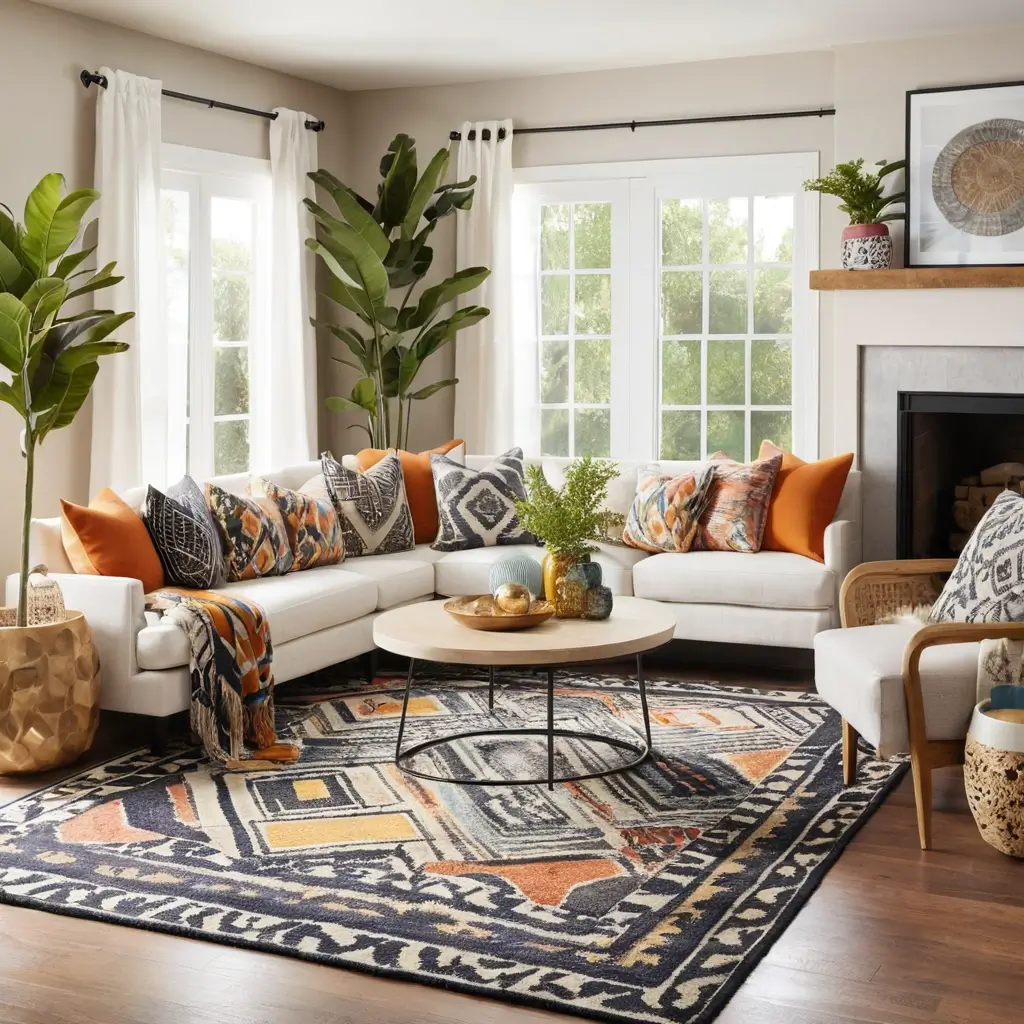
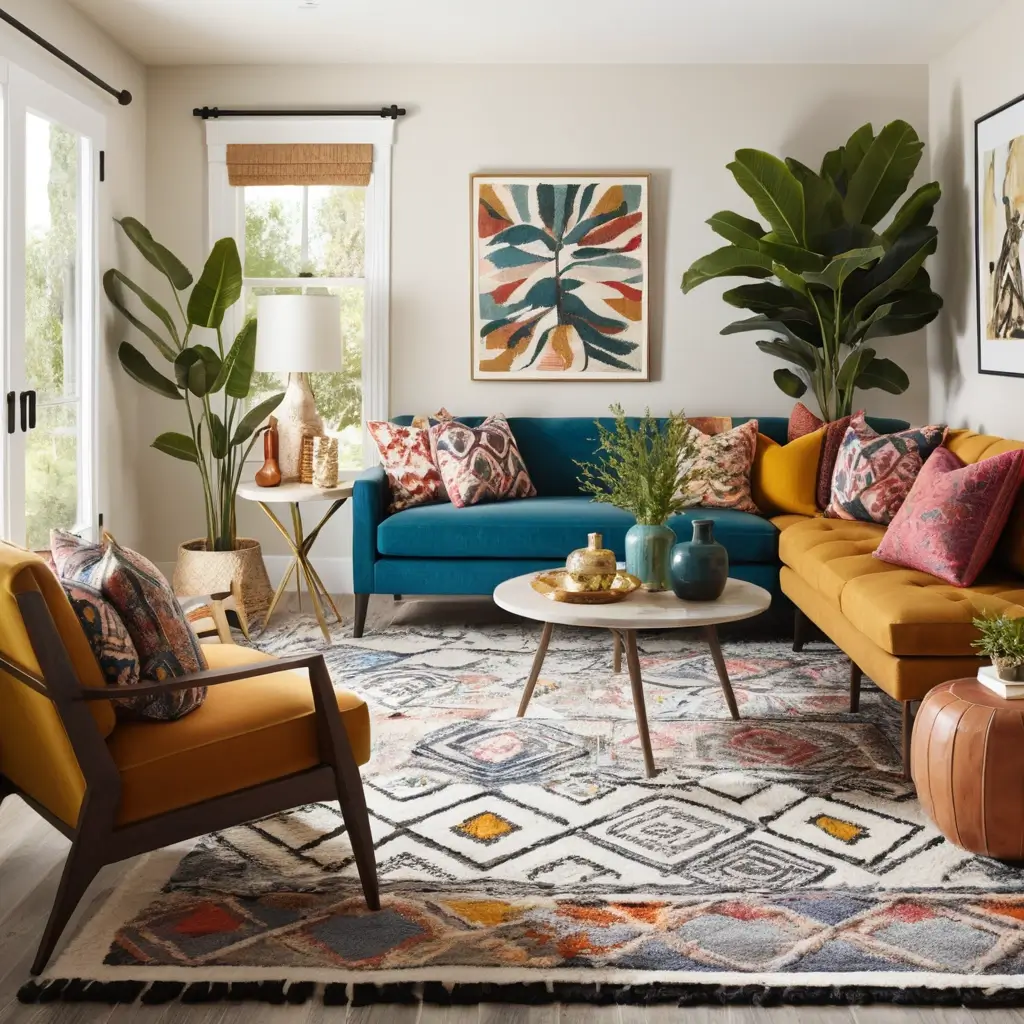
4. Bold, Expressive Color Palettes
2025’s Color Revolution
After years of neutral dominance, 2025 marks a significant shift toward bolder, more expressive color choices. This trend reflects a collective desire for joy, energy, and personality in our living spaces. While neutrals haven’t disappeared entirely, they’re now serving as sophisticated backdrops for vibrant accent colors and unexpected combinations that make a statement.
Key Color Trends for 2025
- Earthy Reds and Terracottas: Rich, grounding hues inspired by natural clay and spices
- Deep Ocean Blues: Moody, contemplative shades that create depth and tranquility
- Vibrant Greens: From forest to emerald, bringing vitality and connection to nature
- Sunset Yellows and Oranges: Warm, energizing tones that create a sense of optimism
- Soft Lavenders and Lilacs: Gentle purple tones that add sophistication with a hint of whimsy
- Rich Chocolate Browns: Deep, luxurious neutrals that add warmth and groundedness
- Jewel Tones: Sapphire, amethyst, ruby, and emerald for luxury and drama
- Unexpected Color Pairings: Complementary combinations that create visual interest
How to Incorporate Bold Colors
Living Room: Paint an accent wall in a deep emerald green or terracotta. Select a sofa in a rich jewel tone like sapphire blue. Layer with accent pillows in complementary colors. Choose artwork with bold color statements. Ground the space with natural wood tones and neutral larger furniture pieces if a full color commitment feels overwhelming.
Kitchen: Consider colorful cabinetry in deep blue or forest green. Choose a vibrant backsplash in yellow or orange tones. Select colored appliances or range hoods as focal points. Incorporate colorful dishware and cookware that can be displayed. Add a runner with bold patterns incorporating trending colors.
Bedroom: Paint the ceiling in a soft lavender for an unexpected color element. Choose bedding in rich earth tones or ocean blues. Add a bold-colored upholstered headboard. Use artwork and accessories to introduce vibrant accents. Consider a feature wall in a deep, saturated hue behind the bed.
Bathroom: Install colorful tile in shower areas or as a backsplash. Choose a vanity in a rich tone like forest green or navy blue. Add colorful towels and bath accessories as easy, changeable accents. Consider colorful fixtures in brass or matte black. Paint a smaller powder room in a bold, saturated color for dramatic effect.
Color Combination Styles
Berry and Stone: Rich purples and lavenders paired with gray-beige neutrals
Earth and Sky: Terracotta and deep blues for a grounded yet expansive feel
Forest Luxury: Emerald green with chocolate brown and gold accents
Sunset Comfort: Gradient of yellows, oranges, and soft reds with neutral backdrops
Oceanic Depth: Various shades of blues and greens with sandy neutrals
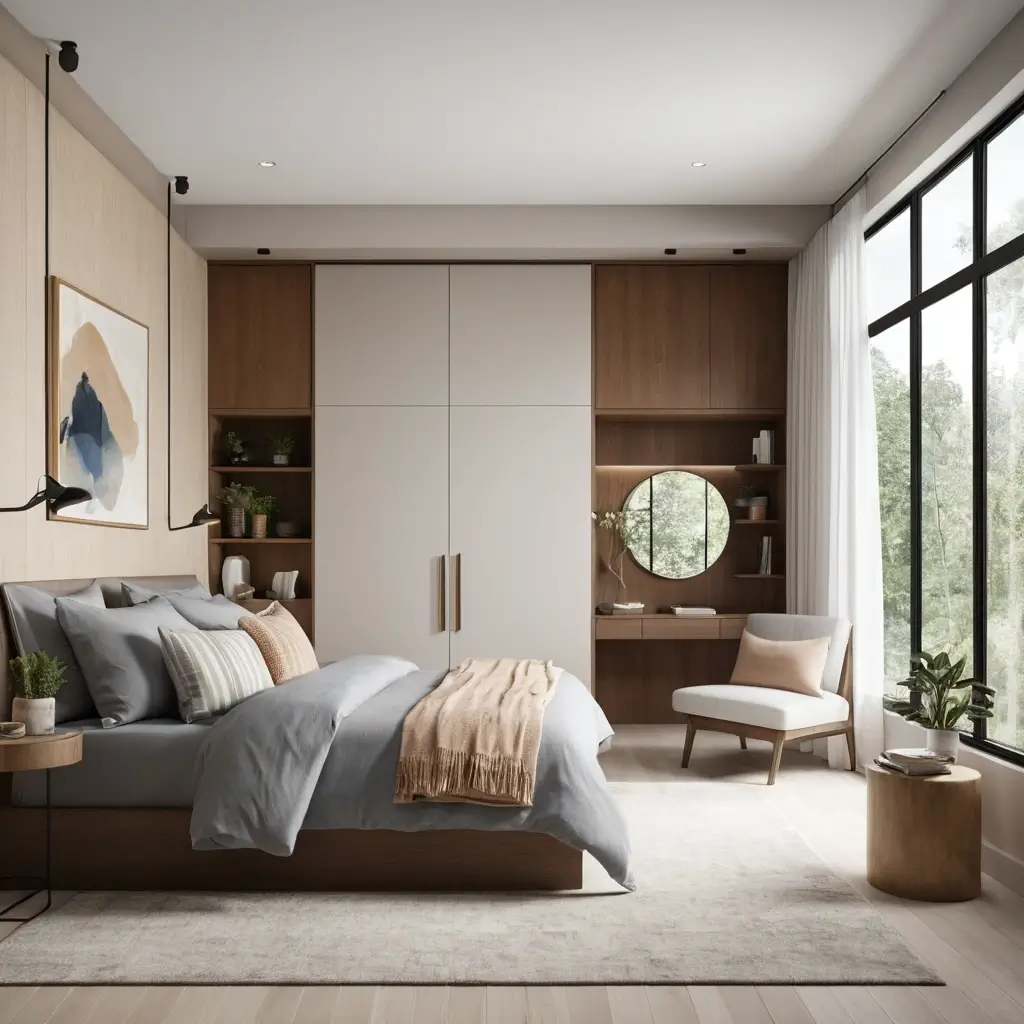
5. Organic and Curved Forms
The Shift to Softer Silhouettes
The sharp angles and straight lines that dominated interior design for years are giving way to softer, more organic forms in 2025. This trend toward curved and flowing silhouettes creates spaces that feel more welcoming, comfortable, and visually interesting. Inspired by forms found in nature, these rounded elements add a sense of movement and vitality to interiors.
Key Elements of Organic Design
- Curved and rounded furniture: Sofas, chairs, and tables with flowing forms
- Arched architectural elements: Doorways, windows, and built-ins with gentle curves
- Sculptural decor: Objects and accessories with organic, asymmetrical shapes
- Wavy and fluid patterns: Textiles and wallpapers featuring undulating designs
- Rounded corners: Softened edges on cabinetry, countertops, and architectural details
- Circular and oval motifs: In mirrors, rugs, lighting, and decorative elements
- Irregular and handcrafted elements: Items that embrace natural imperfections
- Bulbous and pod-like forms: Furniture and lighting with exaggerated rounded shapes
How to Incorporate Organic Forms
Living Room: Select a curved sofa or sectional as a statement piece. Add round or oval coffee and side tables. Choose a circular or irregular-shaped area rug. Install arched bookcases or display niches. Accessorize with sculptural vases, curved lamps, and round pillows.
Dining Area: Opt for a round or oval dining table. Select chairs with curved backs and soft silhouettes. Install a sculptural pendant light with organic form. Choose a credenza or buffet with rounded corners and curved hardware. Add a wavy or irregular-shaped mirror as wall decor.
Bedroom: Select a bed with a curved or scalloped headboard. Choose nightstands with rounded edges or circular shapes. Install wall sconces with curved arms or globe-shaped shades. Add an area rug with flowing, organic pattern. Select dressers or armoires with softened corners and curved fronts.
Bathroom: Install a freestanding tub with organic curves. Choose a vanity with rounded corners. Select a curved or irregularly shaped mirror. Opt for circular or oval sinks. Choose tiles with softened edges or gently curved shapes. Install a curved shower enclosure rather than a standard rectangular one.
Organic Design Styles
Biomorphic: Forms directly inspired by living organisms and natural phenomena
Modern Organic: Clean curved forms with minimal detailing and neutral colors
Sculptural Statement: Bold, exaggerated curves that serve as room focal points
Soft Minimalism: Subtle curves integrated into otherwise simple, clean designs
Neo-Art Deco: Geometric curves and arches with luxurious materials and bold colors
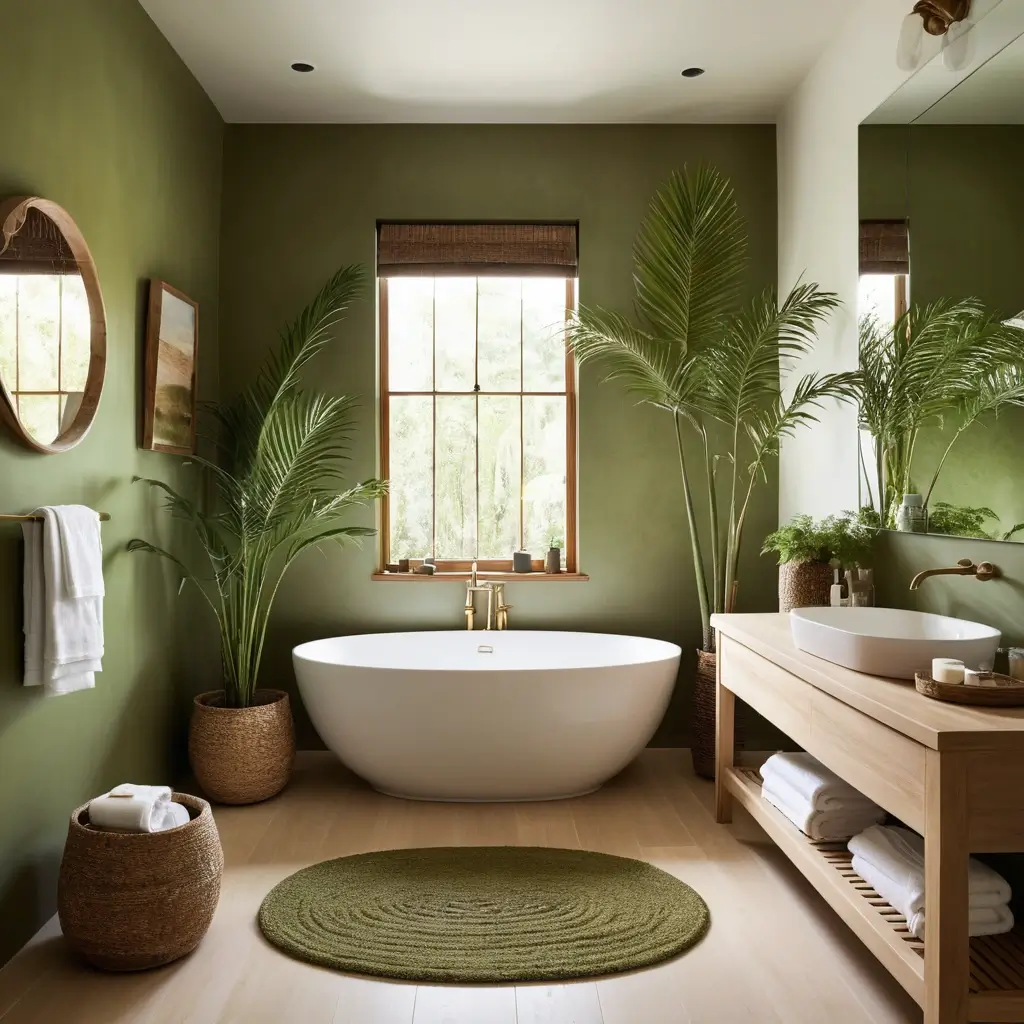
6. Smart Home Integration with Aesthetic Appeal
The Seamless Tech Revolution of 2025
Smart home technology has evolved significantly by 2025, moving beyond mere functionality to become an integral and aesthetically pleasing aspect of interior design. The focus has shifted from obvious, gadget-like devices to tech that blends seamlessly with decor or remains completely hidden until needed. This trend responds to the growing desire for homes that are both technologically advanced and visually harmonious.
Key Elements of Aesthetic Smart Home Design
- Hidden technology: Smart features concealed within traditional decor elements
- Multifunctional tech furniture: Pieces that integrate charging stations, speakers, or controls
- Design-forward devices: Smart technology that doubles as art or decorative elements
- Voice and motion-activated systems: Reducing the need for visible switches and controls
- Integrated lighting solutions: Smart lighting built into architectural elements
- Tech customization: Devices with changeable skins, covers, or finishes to match decor
- Wellness technology: Air purifiers, water filtration, and wellness monitors with design appeal
- Energy management systems: Beautiful displays for monitoring and controlling home energy use
How to Implement Aesthetic Smart Home Features
Living Room: Select a smart TV that doubles as art display when not in use. Choose side tables with built-in wireless charging pads. Install smart lighting that can be controlled by voice or app and integrates with ceiling design. Select smart speakers designed as decorative objects or bookshelf accessories. Use smart blinds or curtains that adjust automatically based on time of day and weather.
Kitchen: Integrate smart displays into backsplashes or cabinetry. Choose appliances with hidden smart controls that appear only when needed. Install under-cabinet lighting that responds to voice commands or motion. Select a refrigerator with customizable front panels to match cabinetry. Use a smart faucet designed with elegant lines and finishes.
Bedroom: Install smart lighting that gradually brightens to wake you naturally. Choose a smart mattress that tracks sleep quality while maintaining the aesthetic of a luxury bed. Select smart window treatments that open and close on schedule. Incorporate air quality monitors designed as attractive bedside objects. Install in-wall speakers that remain invisible while delivering high-quality sound.
Bathroom: Install a smart mirror with hidden display capabilities. Choose a shower system with voice-activated temperature and flow controls. Select a smart scale designed as an attractive bathroom accessory. Install a toilet with hidden smart features and minimal, clean design. Choose a vanity with built-in charging drawers for beauty devices.
Smart Home Design Styles
Integrated Organic: Technology that mimics or incorporates natural elements and forms
Minimalist Tech: Clean, simple devices with hidden functionality
Artisanal Tech: Devices with handcrafted looks, natural materials, and warm finishes
Retro-Futurism: Technology with vintage-inspired casings and analog details
Luxury Tech: High-end materials and finishes for technology devices
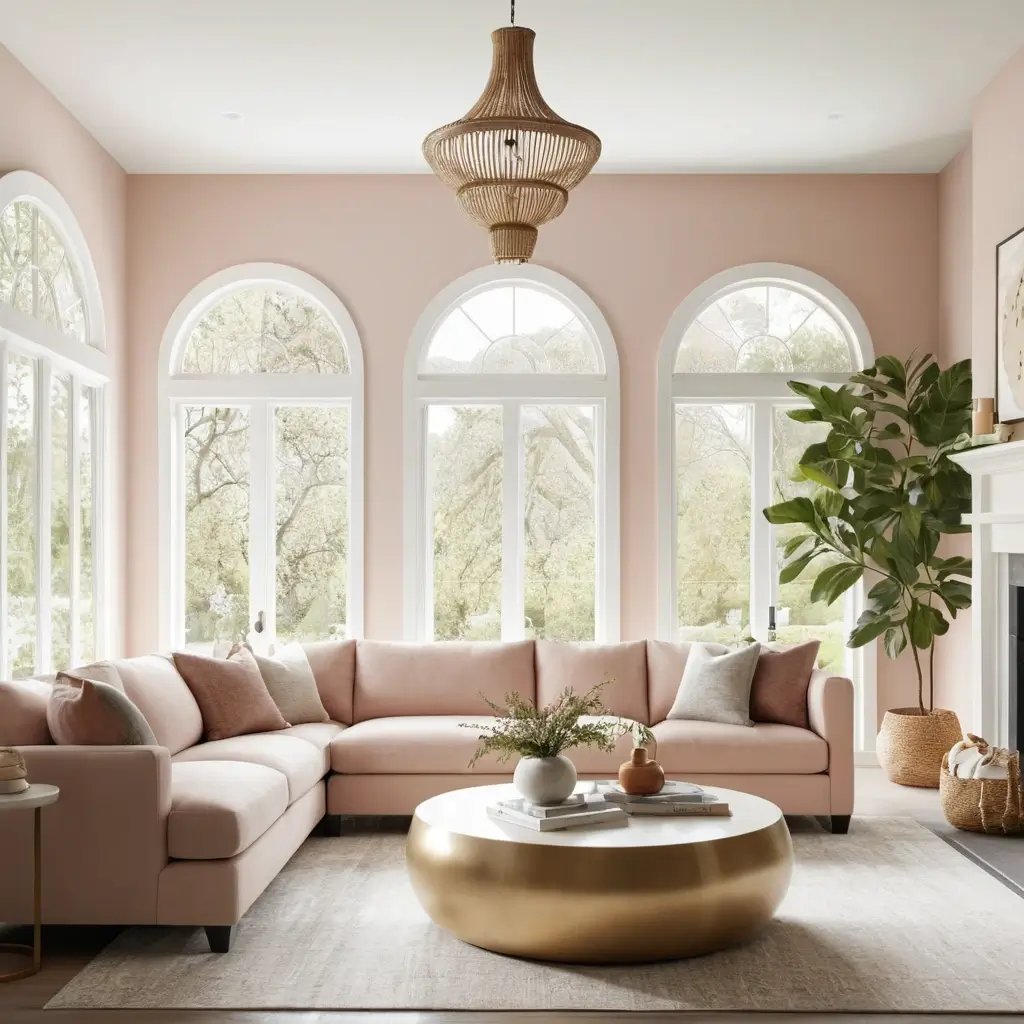
7. Textural Richness and Layering
The Tactile Revolution in 2025 Interiors
As digital experiences dominate our daily lives, 2025 interior design emphasizes the importance of physical, tactile experiences within our homes. This trend celebrates richly textured surfaces, contrasting materials, and dimensional elements that engage our sense of touch and create visually dynamic spaces. Layering different textures adds depth, warmth, and interest to interiors without necessarily introducing bold colors or patterns.
Key Elements of Textural Design
- 3D wall treatments: Textured panels, dimensional tiles, and sculptural wall coverings
- Mixed material furniture: Pieces combining multiple textures in a single item
- Tactile fabrics: Bouclé, velvet, linen, wool, and other touchable textiles
- Contrasting surface finishes: Matte alongside glossy, rough against smooth
- Handcrafted elements: Items showing the mark of the maker through texture
- Layered textiles: Multiple fabric types used in conjunction for depth
- Textured natural materials: Fluted wood, hammered metal, rough stone, and woven fibers
- Dimensional patterns: Designs with raised elements that create shadow and depth
How to Create Textural Richness
Living Room: Layer a chunky knit throw over a smooth velvet sofa. Combine pillows in various textures like bouclé, linen, and cut velvet. Install a textured accent wall using 3D panels, fluted wood, or textured wallpaper. Choose a coffee table that combines materials like wood, stone, and metal. Select a heavily textured area rug with high and low pile or visible weave. Add ceramics and sculptures with interesting surface treatments.
Dining Area: Select chairs upholstered in tactile fabrics or with woven backs. Choose a dining table with an interesting grain pattern or textured finish. Install a chandelier with textural elements like woven material or hammered metal. Add a textured table runner over a smooth tablecloth. Display ceramic dishware with varied glazes and finishes. Install a textured wallpaper or wainscoting on dining room walls.
Bedroom: Create a layered bed with linens of varying textures—crisp cotton sheets, a chunky knit blanket, a quilted coverlet, and textured decorative pillows. Choose a headboard in a tactile fabric like bouclé or fluted wood. Add window treatments with visible texture like linen or a subtle pattern. Install wallpaper with tactile elements on the ceiling or accent wall. Select bedside lamps with textured bases in ceramic, concrete, or hammered metal.
Bathroom: Install tiles with dimensional patterns or varying surface treatments. Select a vanity in fluted wood or with textured door fronts. Choose towels with different pile heights and visible weaves. Add a natural fiber rug or wooden bath mat for warmth and texture. Install a shower curtain with textural elements like waffle weave or embroidery. Select hardware with interesting textures like hammered or brushed finishes.
Textural Design Styles
Global Texture: Drawing on textural elements from various cultural textile and craft traditions
Organic Texture: Emphasis on natural, unprocessed textures from wood, stone, and fibers
Sculptural Texture: Bold, three-dimensional elements that create dramatic shadows and depth
Monochromatic Texture: Using multiple textures in a single color palette for subtle richness
Contrast Texture: Deliberately juxtaposing smooth with rough, soft with hard for dramatic effect
Conclusion: Creating Your Personalized 2025 Home
The 2025 home decor trends reflect our collective desire for spaces that are not only beautiful but also sustainable, functional, and expressive of our individual personalities. While these seven trends offer exciting directions for refreshing your interiors, remember that the most successful homes blend trendy elements with timeless design principles and personal meaning.
Consider which of these trends resonates most with your lifestyle, existing decor, and personal preferences. Perhaps the biophilic elements appeal to your love of nature, or the textural richness speaks to your desire for a more tactile, sensory home environment. You might be drawn to the bold color palettes for your living areas while preferring the curved, organic forms for your bedroom sanctuary.
The beauty of 2025’s design landscape is its emphasis on personalization and authenticity. Mix and match elements from different trends to create spaces that truly reflect who you are while incorporating forward-thinking design principles that will keep your home feeling fresh and relevant for years to come.
Which of these 2025 home decor trends are you most excited to incorporate into your space? Are you already embracing any of these elements in your current decor? We’d love to hear about your design plans and see how you interpret these trends in your own unique way.
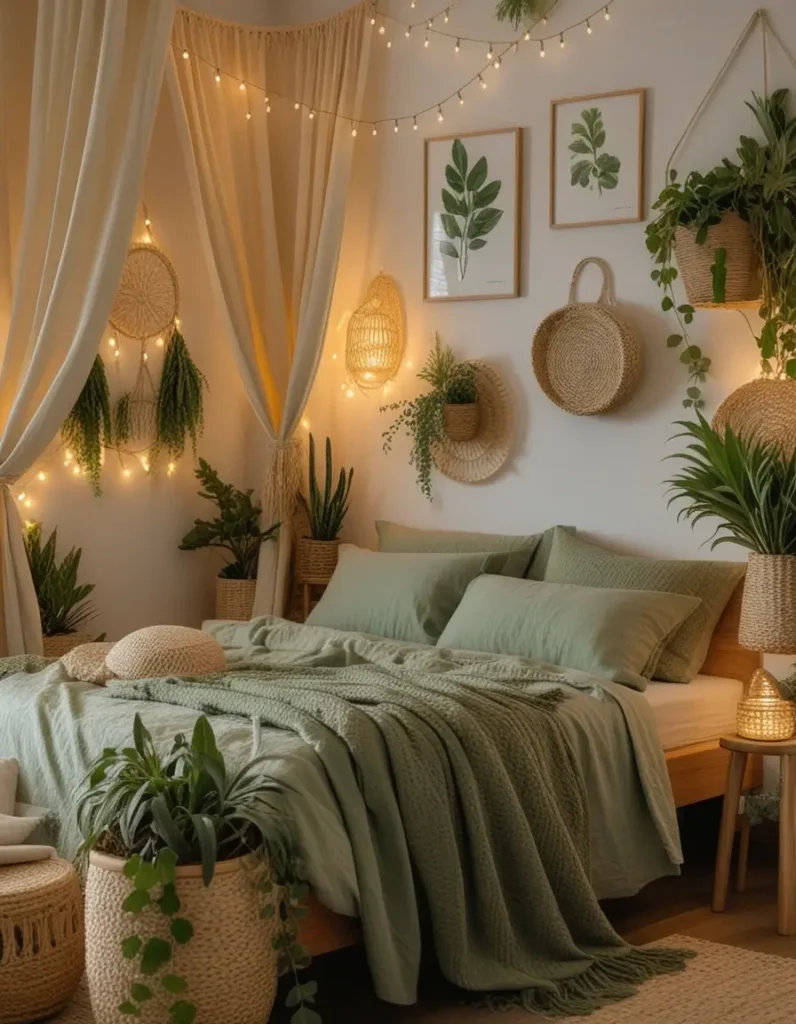
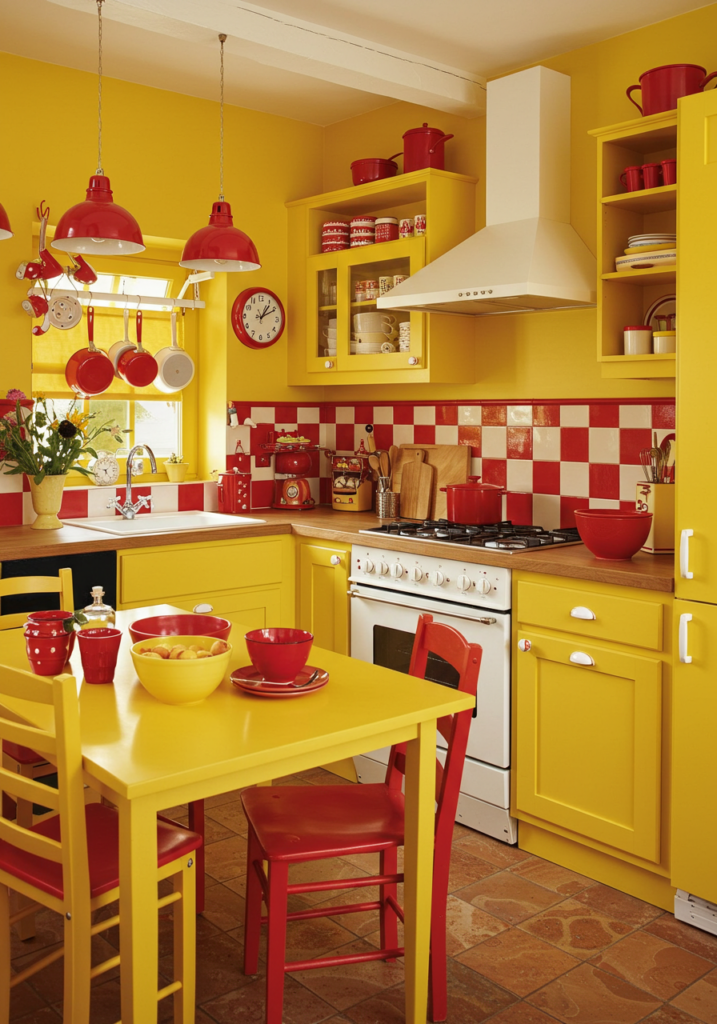
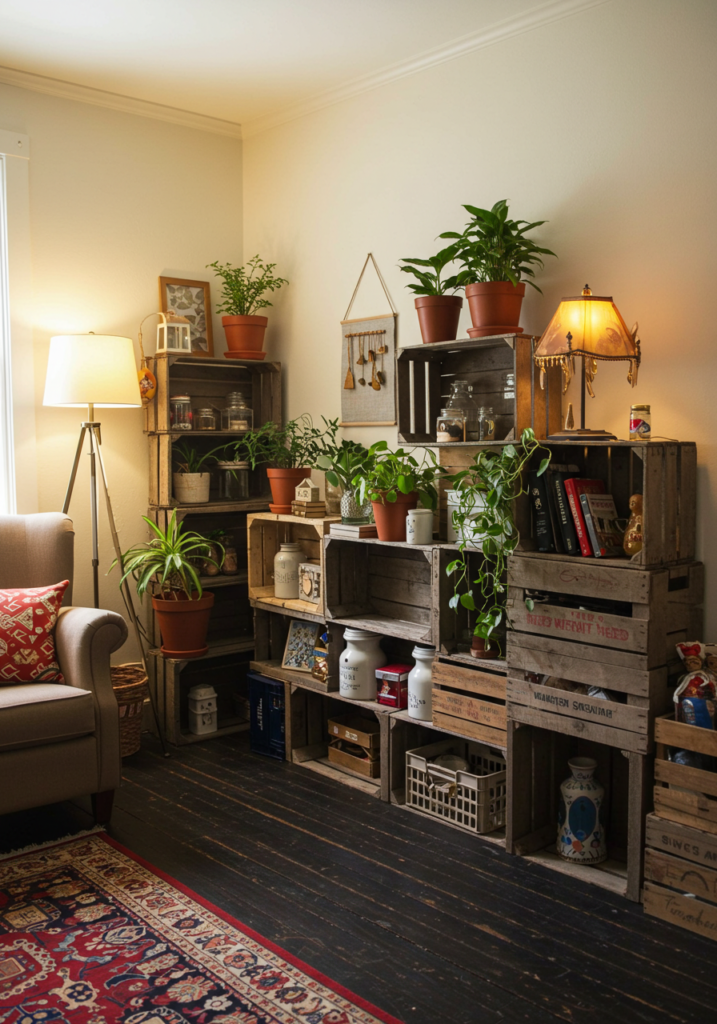
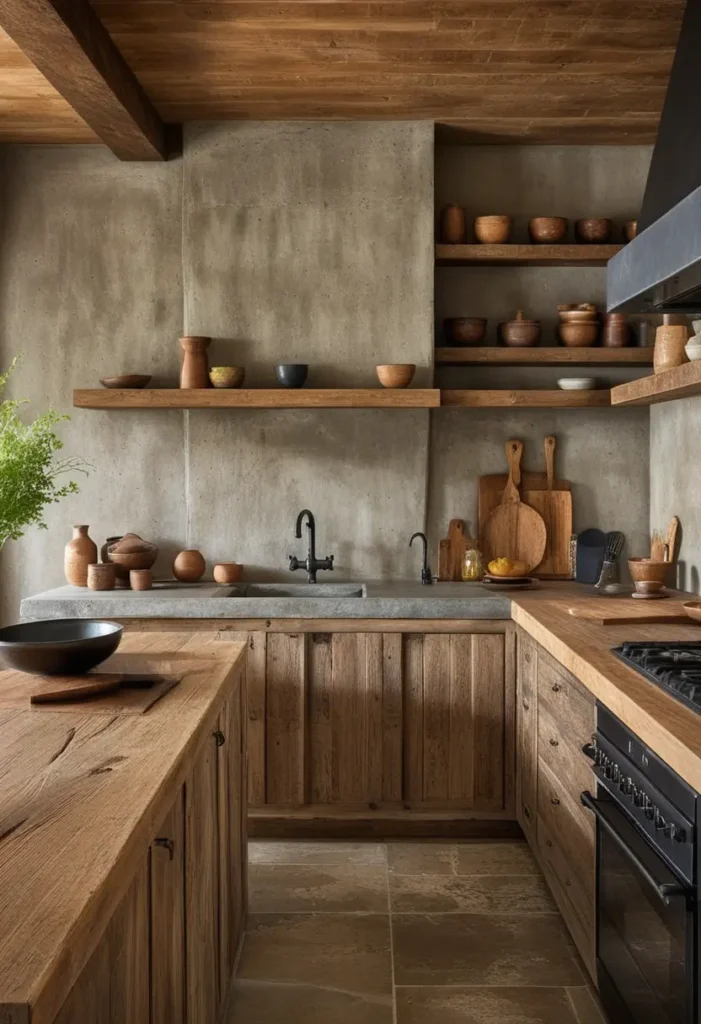
Pingback: How to Create a Boheme Bedroom on a Budget: Essential Tips and Tricks -
Pingback: Wallpaper for Bedroom: Choosing the Perfect Style -
Pingback: 1970s Color Palette: Complete Guide to Authentic Retro Colors & Modern Applications -
Pingback: Modern American Home Decor Ideas For 2025: Transform Your Space With Style - Thecradlesg.com